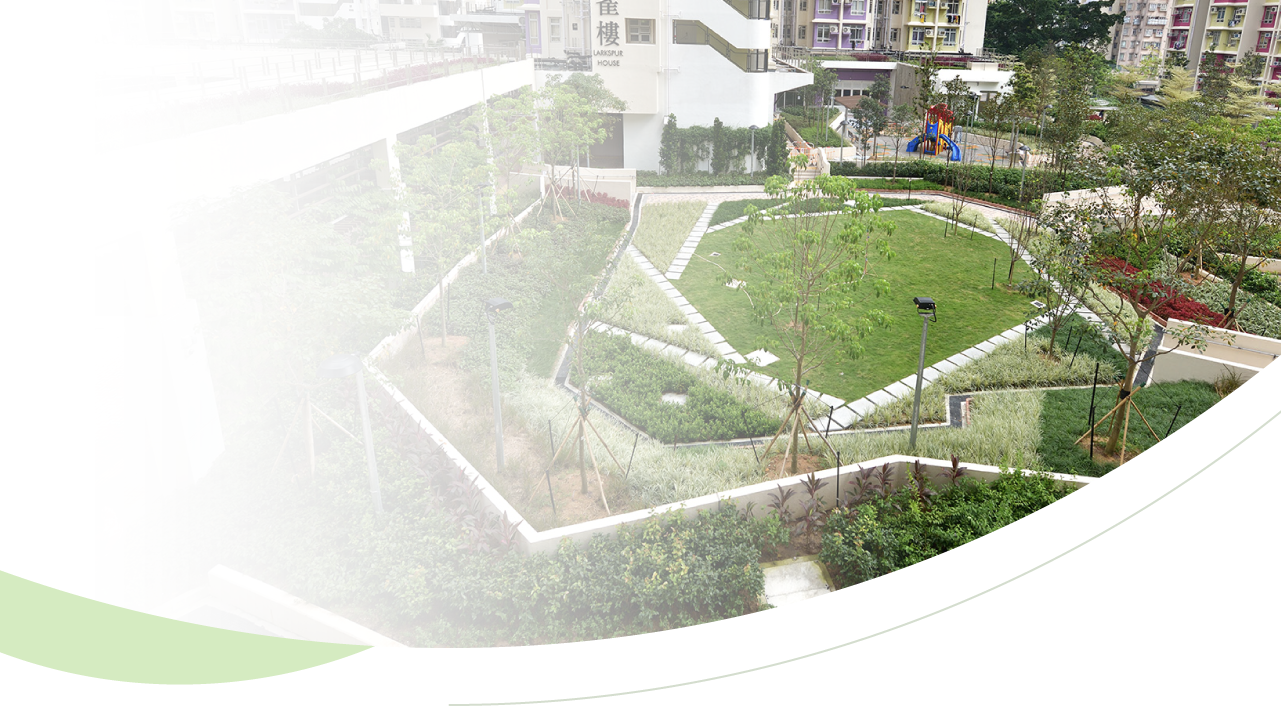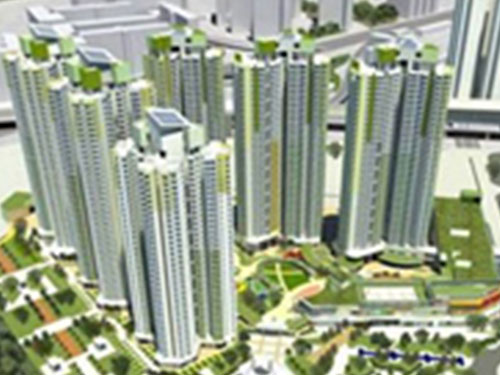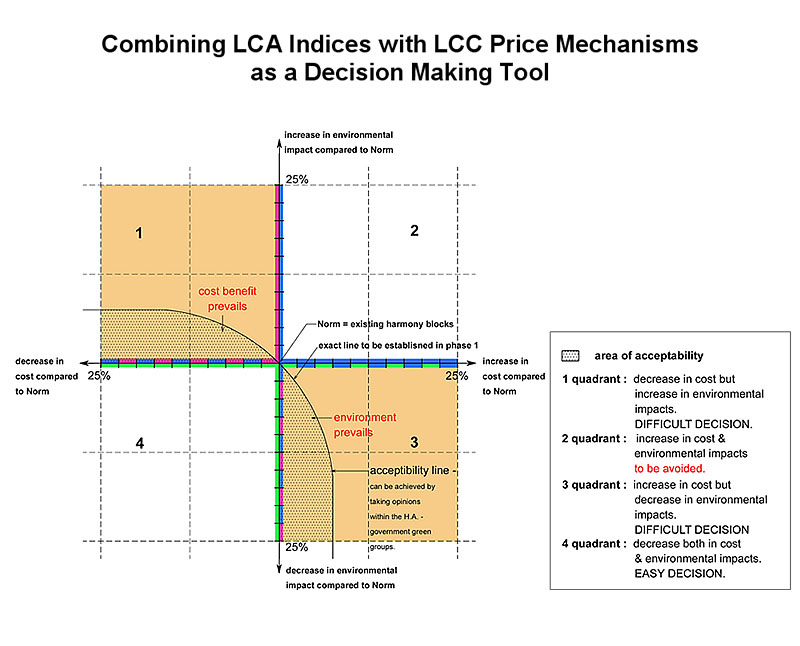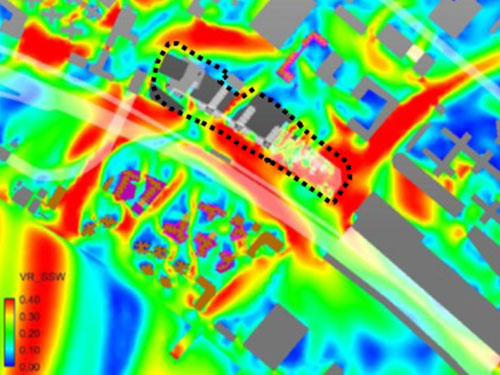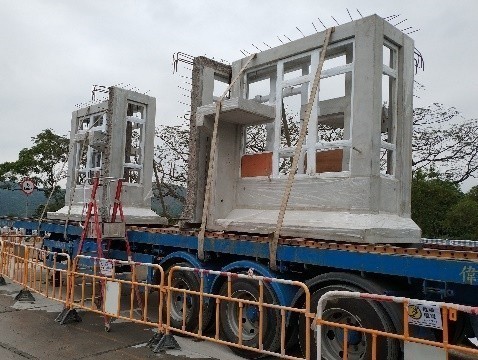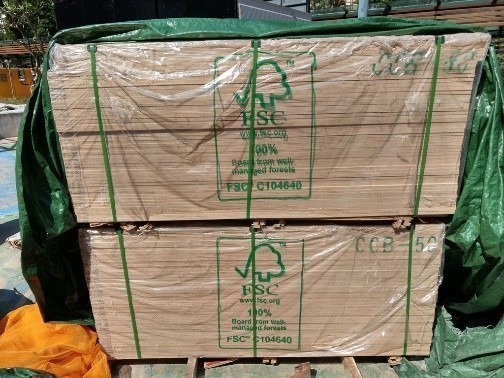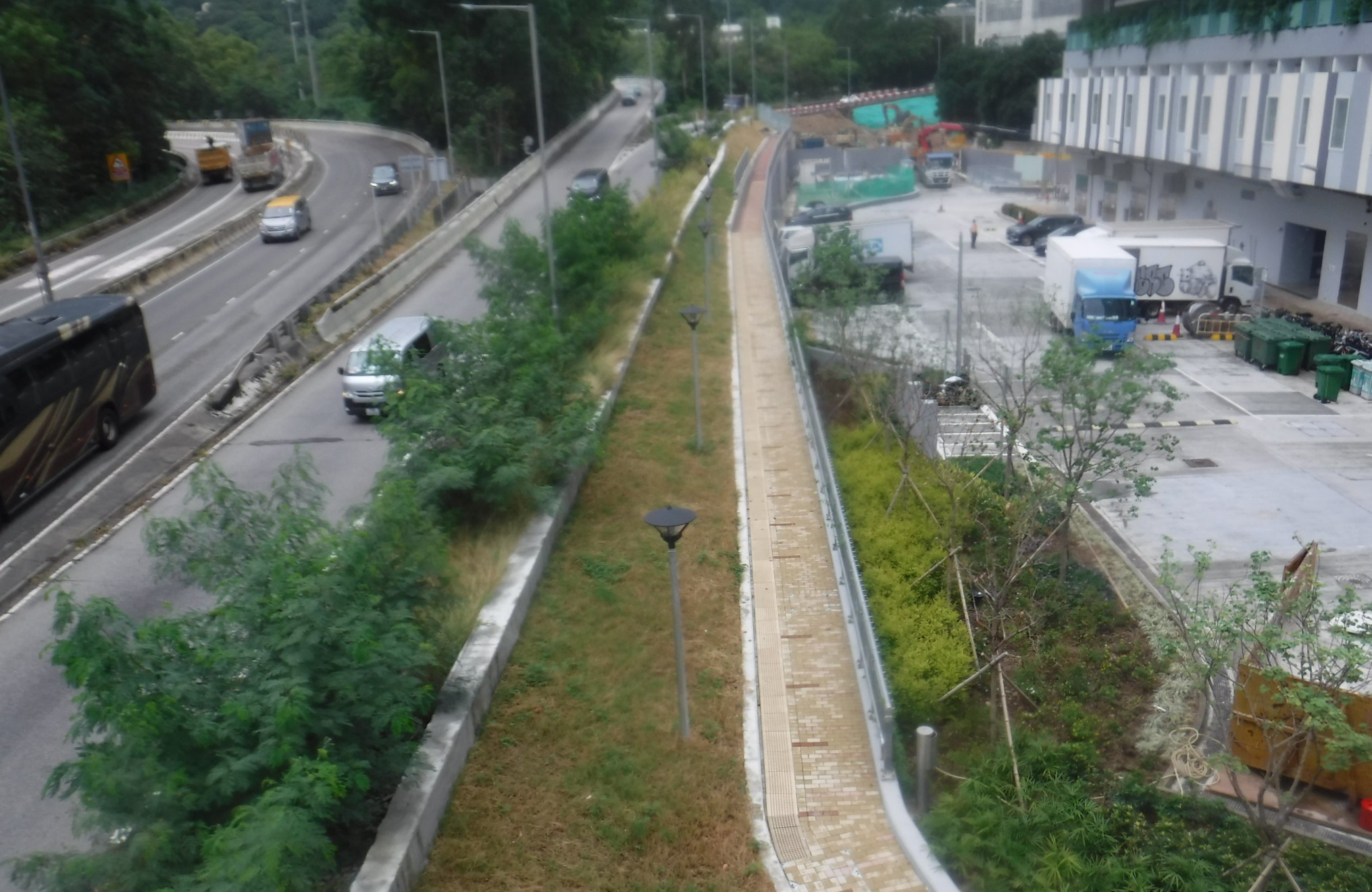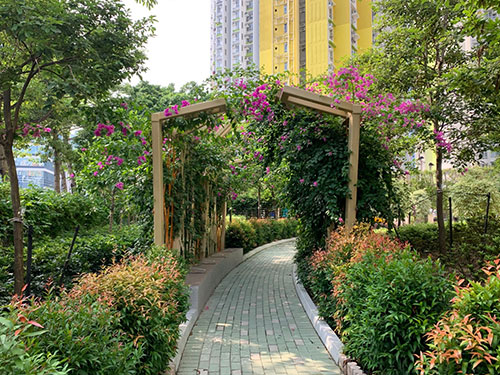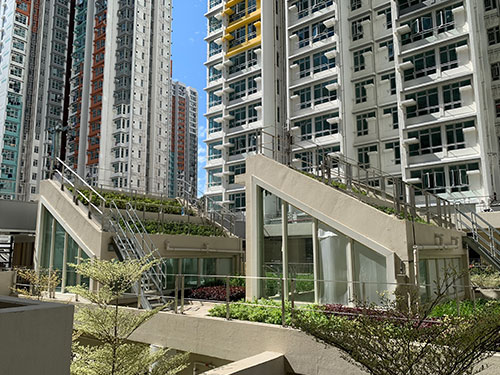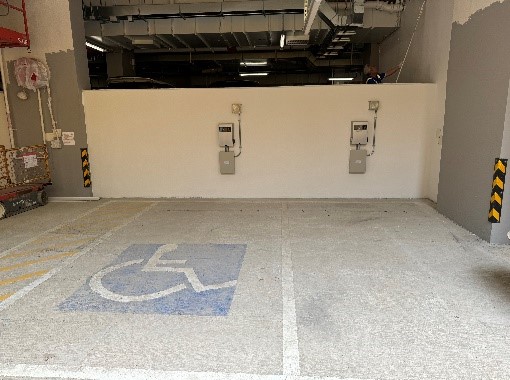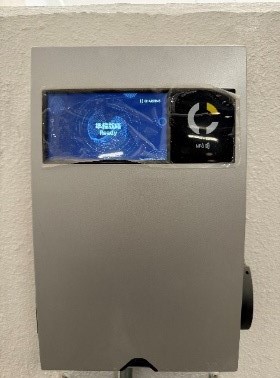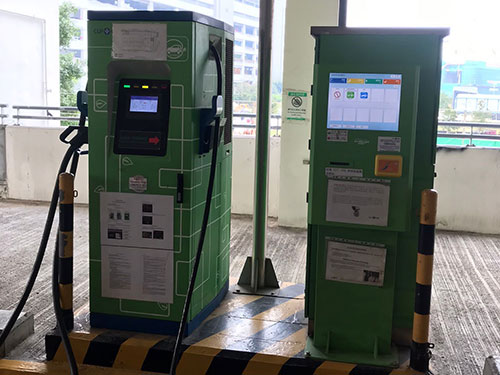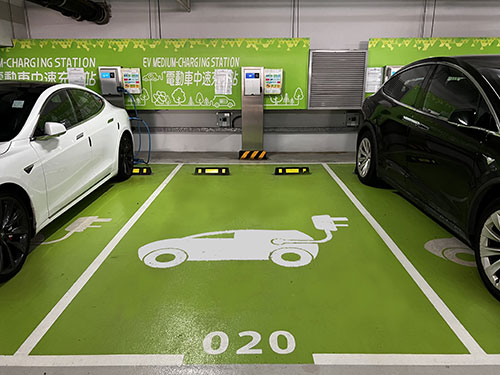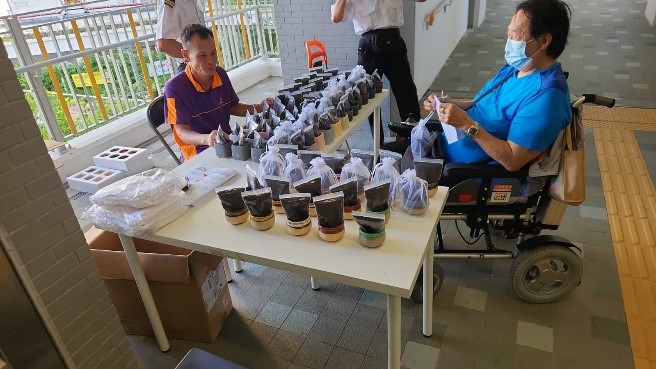-
To reduce carbon emissions, HA have developed a life cycle Carbon Emission Estimation (CEE) method for estimating emissions from public housing developments throughout their life cycle, starting at the planning and design stages. The method enables us to set emission benchmarks at each stage of a project. These benchmarks can be used to compare different buildings and housing estates and set improvement goals. By estimating emissions early on, we can identify and address high-emission aspects of developments before construction begins.
The CEE covers the following six major aspects:
Construction Stage 1. Materials Consumed during Construction
2. Materials for Structure
Occupation Stage 3. Electricity Consumption by Communal Building Services
4. Carbon Reduction by Renewable Energy Installations
5. Carbon Absorption by Trees
Demolition Stage 6. Demolition
With the emission benchmarks established, we can improve designs to reduce carbon emissions and increase the overall sustainability of housing developments. Since February 2011, we have adopted carbon emission estimation for the six aspects above during the design phase of all new public housing projects. In 2023/24, we conducted carbon emission estimation for 9 new public housing projects.
-
The selection of building materials has significant impact both in environmental and monetary terms. If better alternatives are used, huge potential benefits can be realised over the life span of a building. Conscious of our environmental responsibility to the community and the need for cost effectiveness, we have pioneered evaluation methodologies for appraising building materials and products on a life cycle basis for better sustainable solutions.
The main objective of the study is to appraise building materials commonly used in our New Harmony 1 (NH1) blocks and to explore how their sustainability can be enhanced.
Following are some key findings of the study:
- The ratio of capital cost to maintenance cost is 1:4 while the ratio of initial impact to operational environmental impact is about 1:10. This means more emphasis should be placed on the maintenance regime.
- Initial environmental impact generated from architectural items is low, while the recurring impact generated from regular maintenance is comparatively high.
- It has been validated that the NH1 domestic block has reached the optimum level in terms of positive environmental impact and life cycle cost effectiveness.
Applications:
- A number of elements have been evaluated with the aim to enhance the design standard.
- The developed computer model and data generated can be used for comparing the cost and environmental performance of some new/alternative materials.
- The whole study report has been uploaded onto HA website for access by general public.
-
To create quality living environment and improve the environmental performance of our new building projects, micro-climate studies and Air Ventilation Assessments are conducted during the planning and design stages. With the use of computerised simulation models, we can optimise our design to enhance wind environment of the site, natural ventilation and daylight for the domestic flats, thermal comfort of external areas and energy efficiency. Since 2004 we have been applying the studies in all public housing projects. Encouraging feedback from residents on environmental performance was collected in resident survey conducted in recently completed projects. In 2023/24, we continued to carry out micro-climate studies for 50 on-going projects, in addition to Air Ventilation Assessment for 44 on-going projects.
Sun Shading Analysis for Outdoor Open Spaces
-
-
Our current construction contracts specify that 35% of the cement normally used to produce precast façades and stairs must be replaced by the green construction material Ground Granulated Blast-furnace Slag (GGBS). This requirement has been extended so that GGBS must now also be used in the production of precast hard paving, partition walls and refuse chutes. Currently, we are working with local concrete suppliers to explore the possibility of the large-scale introduction of GGBS to replace cement, and are planning to adopt a higher percentage of GGBS in various structural concrete components in public housing developments, including foundation piles, pile caps, slabs and walls.
The specifications for green materials that are included in our new works projects are all aligned with BEAM Plus NB V2.0. We regularly review and update our specifications to align with the Green Product Accreditation & Standards Scheme of the HKGBC.
-
We have stopped using tropical hardwood in temporary construction works since mid-2003. We have also promulgated specification requiring contractors to use timber from sustainable source for temporary works including formwork, protective canopy, catch fan, walkway, toe board, timber mock-up, signboards etc. during construction. We continue to apply specifications for the use of timber from certified sustainable source for manufacturing of doors. In August 2014, we implemented a new specification allowing the use of finger and composite joints for manufacturing door-sets, which help reduce the use of raw materials in the manufacturing process.
-
-
-
We protect the ecology nearby our housing estate carefully by applying balanced ecological planning and design principles in all suitable projects. We set out green design guidelines to achieve at least 20% greenery ratio and up to 30% for sites exceeding 2 hectares at new public housing developments during planning, design and implementation stage. In addition, we continued to closely monitor the cost effectiveness of the greening design and provisions in our new estates. We co-ordinate with the Development Bureau on tree preservation and management works.
-
To enhance greening in estates, we achieve at least 20% greenery ratio and up to 30% for sites exceeding 2 hectares at new public housing developments during planning, design and implementation stage. We are implementing initiatives of roof greening and vertical greening in addition to traditional greening at grade and slopes.
We completed a study on the environmental benefits of green roof at two selected residential blocks at Shin Ming Estate in October 2013. Some of the recommendations from the study have been incorporated into the Green Design Guide in 2015/16 and applied on new developments.
-
-
In support of the Government’s policy to promote wider use of electric vehicles (EVs), HA has provided EV chargers at about 2,800 private car (PC) parking spaces in about 110 carparks. At present, HA will also provide medium chargers at all PC, motorcycle and LGV parking spaces and two quick chargers at hourly PC parking spaces for carparks with not less than 100 parking spaces in total in new public housing projects.
In order to complement the Government's long-term policy objectives and to cope with the increase in EV users, HA is currently expanding the provision of EV charging facilities in its existing carparks in phases.
Taking into account the capacity of power supply available in individual carparks and estates concerned as well as the utilisation of existing EV charging facilities, HA is progressively installing additional medium charging facilities at about 5,000 PC parking spaces, and expect to complete the works by end 2025.
-
Under the programme "Action Seedling", participants from residents, schools and community organisations were required to nurse seedlings plants given by the Housing Authority and its building contractors until they are fit for transplanting into the planters of new public housing estates. The programme aims to unify the inputs from our contractors, tenants and general community in bringing new public housing estates to a greener living environment.
